Power station from a cup of boiling water
As you know, electricity can be produced using electrodynamic generators (steam, wind or water), solar cells, as well as the conversion of the temperature difference of two dissimilar conductors and semiconductors, working on the Seebeck effect. More often, one can hear about the Peltier effect - the separation of temperatures on dissimilar soldered conductors and semiconductors, which is the opposite effect of Seebeck.For analysis, we use one such element with the marking TEC1-12706.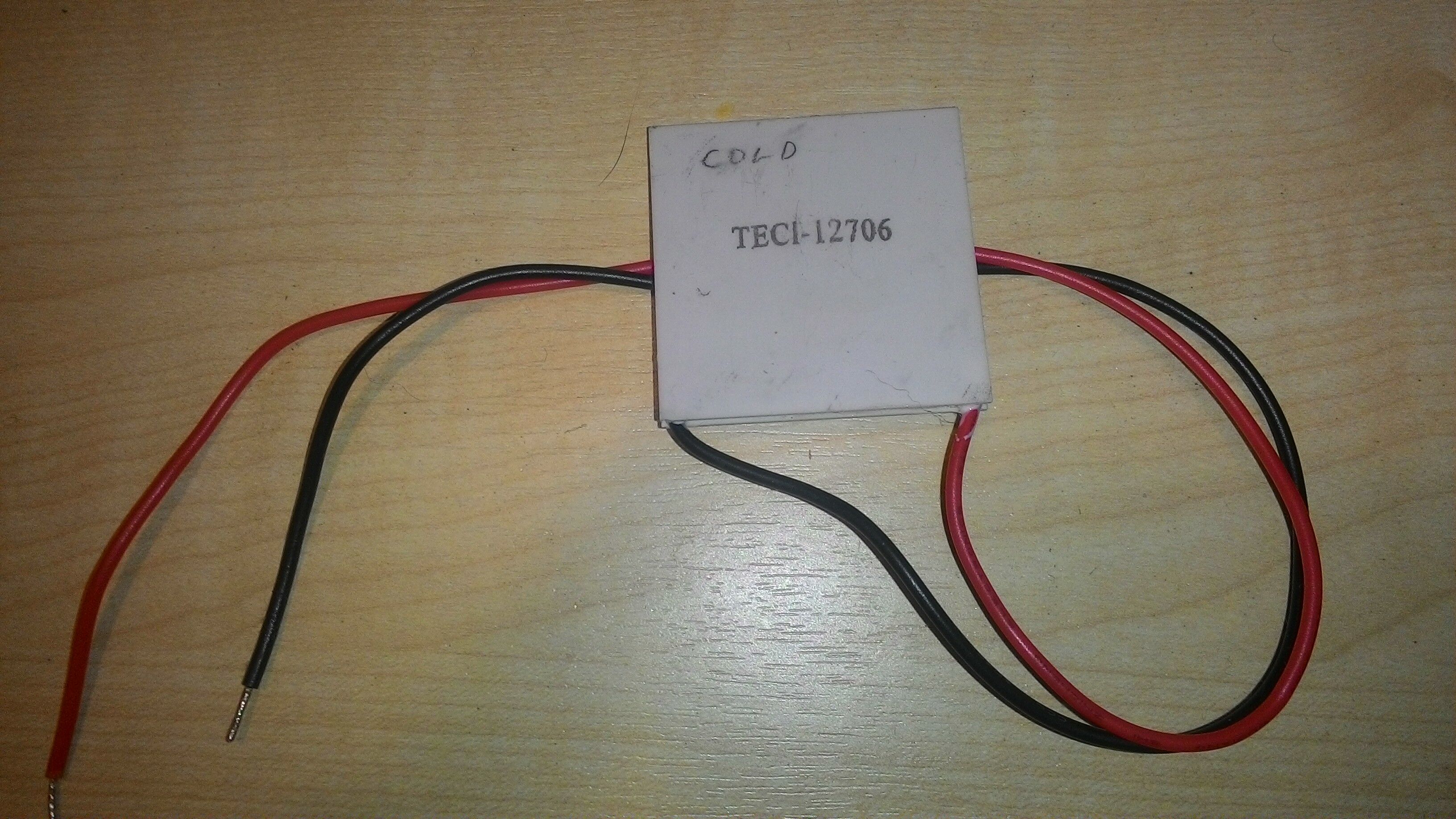 The element is designed for a nominal voltage of 12V, the maximum is slightly higher, but it increases the risk of damage to the element and reduces its efficiency. The element is assembled from 127 cells and is designed for a maximum current of 6 A. When connecting the element to a voltage source, the current consumption was about 2 A, and the absorbed power from the source is 24 watts.To obtain electricity, one element plate should be heated, and the second should be cooled. In my case, for the wire colors shown, the cold side is marked, the hot side is not marked. When changing the polarity of the wires, the sides will also change in their properties.To cool the plate, we use a radiator in melting ice, we take the temperature of the cold surface of the Seebeck element about 0 degrees.
The element is designed for a nominal voltage of 12V, the maximum is slightly higher, but it increases the risk of damage to the element and reduces its efficiency. The element is assembled from 127 cells and is designed for a maximum current of 6 A. When connecting the element to a voltage source, the current consumption was about 2 A, and the absorbed power from the source is 24 watts.To obtain electricity, one element plate should be heated, and the second should be cooled. In my case, for the wire colors shown, the cold side is marked, the hot side is not marked. When changing the polarity of the wires, the sides will also change in their properties.To cool the plate, we use a radiator in melting ice, we take the temperature of the cold surface of the Seebeck element about 0 degrees.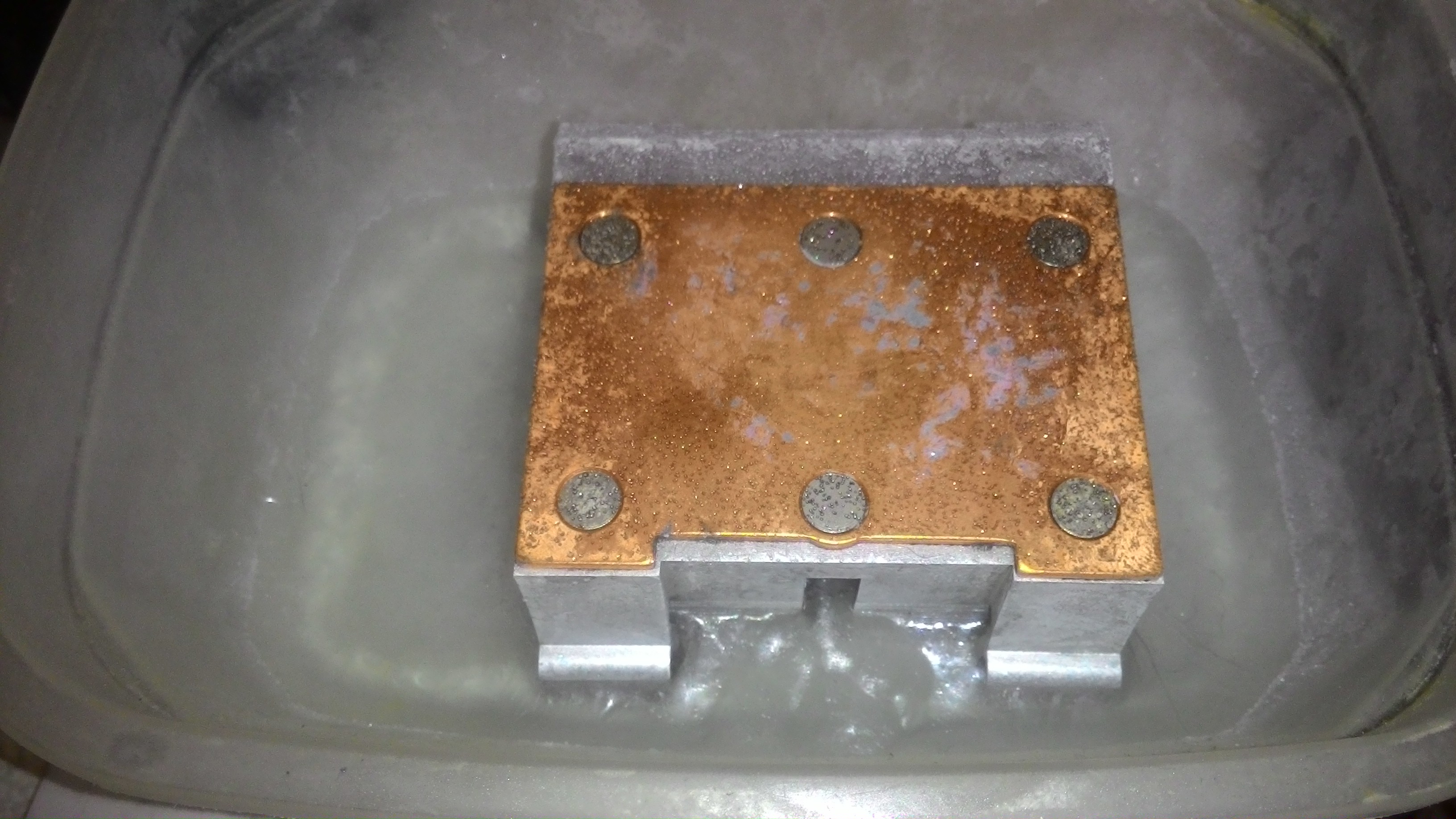
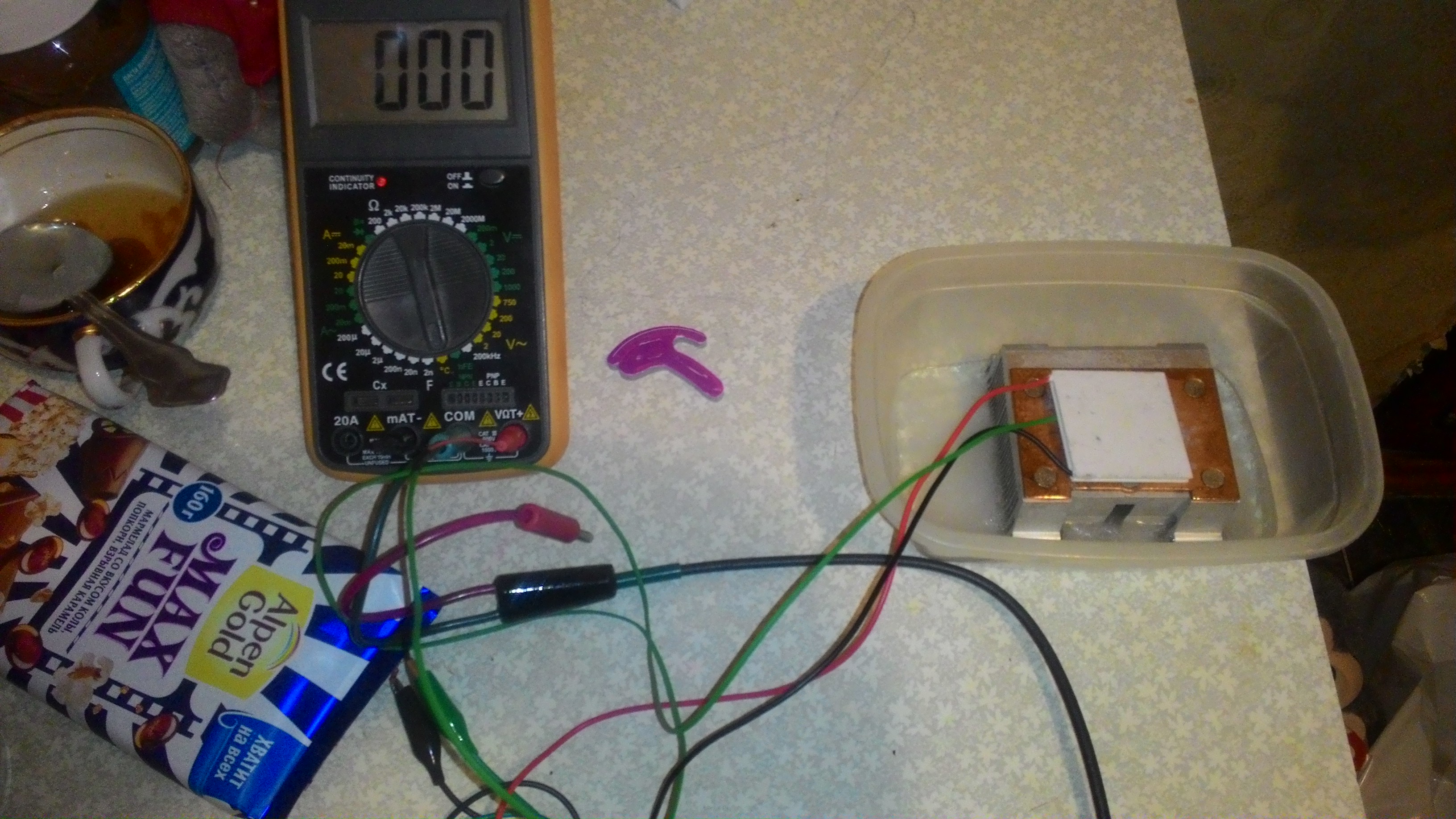 To heat the plate, put a mug of boiling water on top and take the temperature of the hot part for 100 degrees. Let’s wait for the temperature to stabilize on the cold side, which was 11 degrees.
To heat the plate, put a mug of boiling water on top and take the temperature of the hot part for 100 degrees. Let’s wait for the temperature to stabilize on the cold side, which was 11 degrees.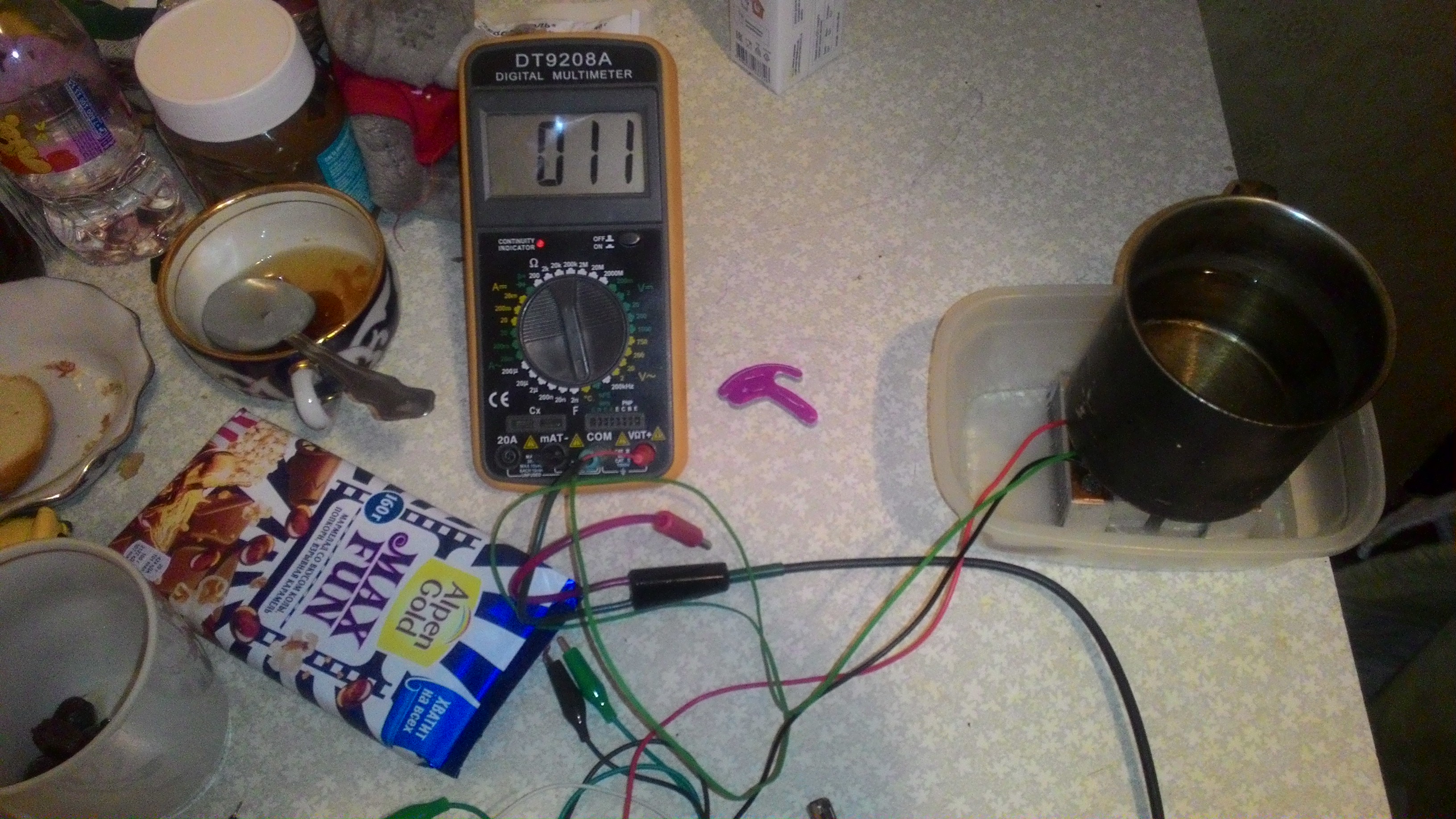 In this case, the resulting voltage at the terminals of the element is about 1.7 V (idle).
In this case, the resulting voltage at the terminals of the element is about 1.7 V (idle).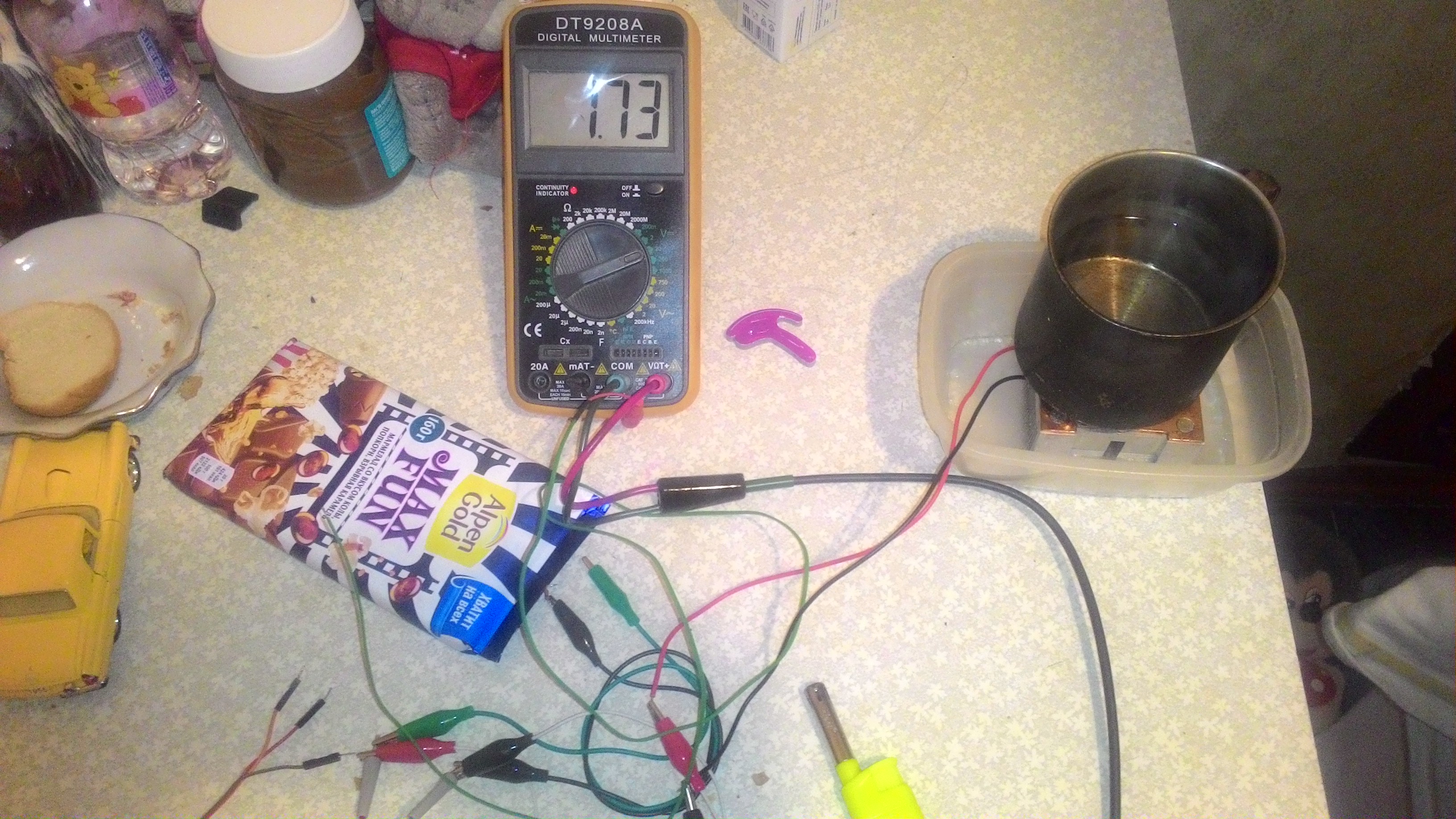 At a load of 100 ohms, the voltage was already 1.5 V.
At a load of 100 ohms, the voltage was already 1.5 V.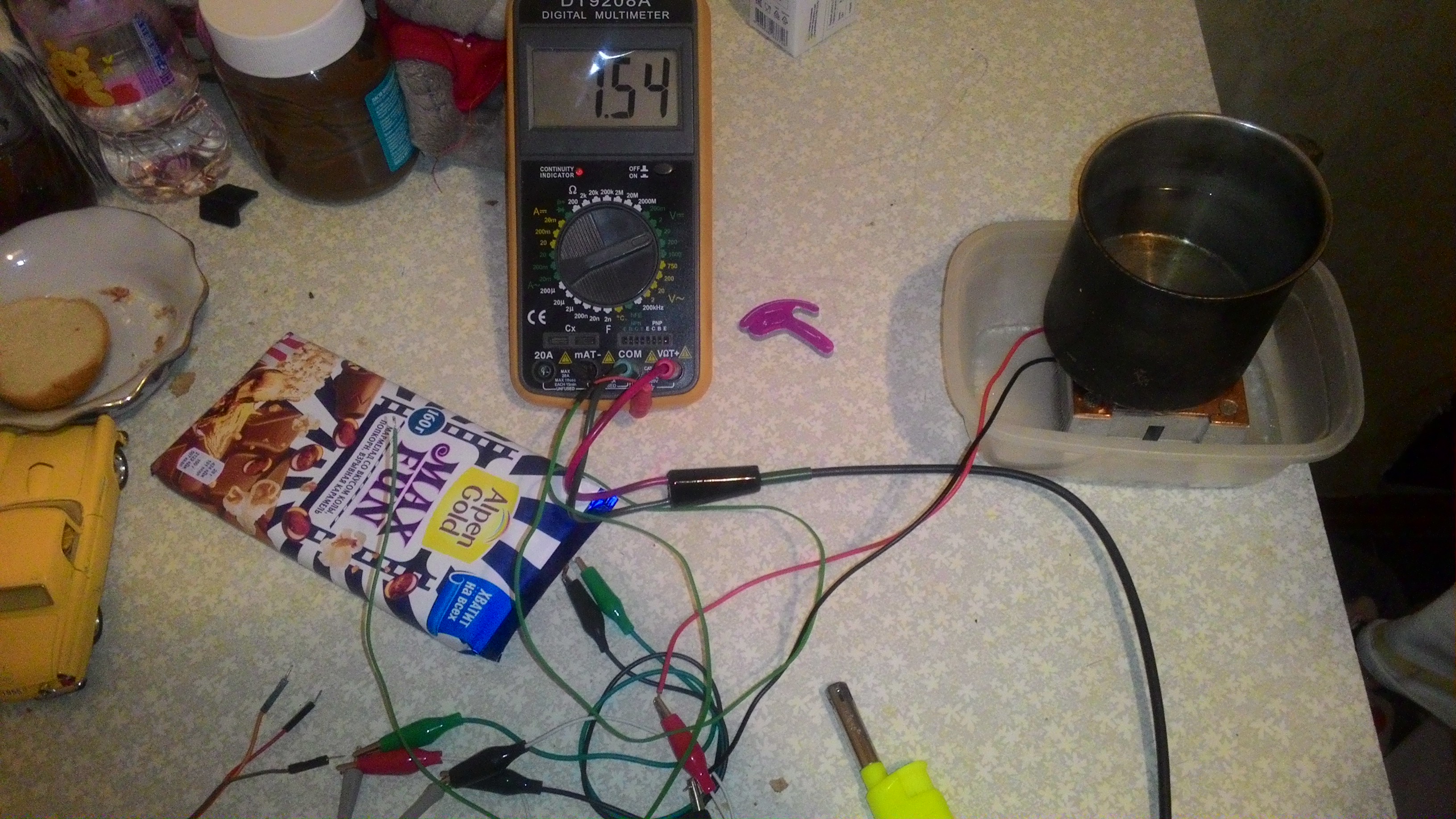 The power allocated to the resistor is 22.5 mW. We connect the Burst-Up 0.8 to 5 V converter to the terminals of the Seebeck element, and a flashing LED to the converter output.Yes, it flashes, the diode needs very little current to operate (less than 10 mA).
The power allocated to the resistor is 22.5 mW. We connect the Burst-Up 0.8 to 5 V converter to the terminals of the Seebeck element, and a flashing LED to the converter output.Yes, it flashes, the diode needs very little current to operate (less than 10 mA).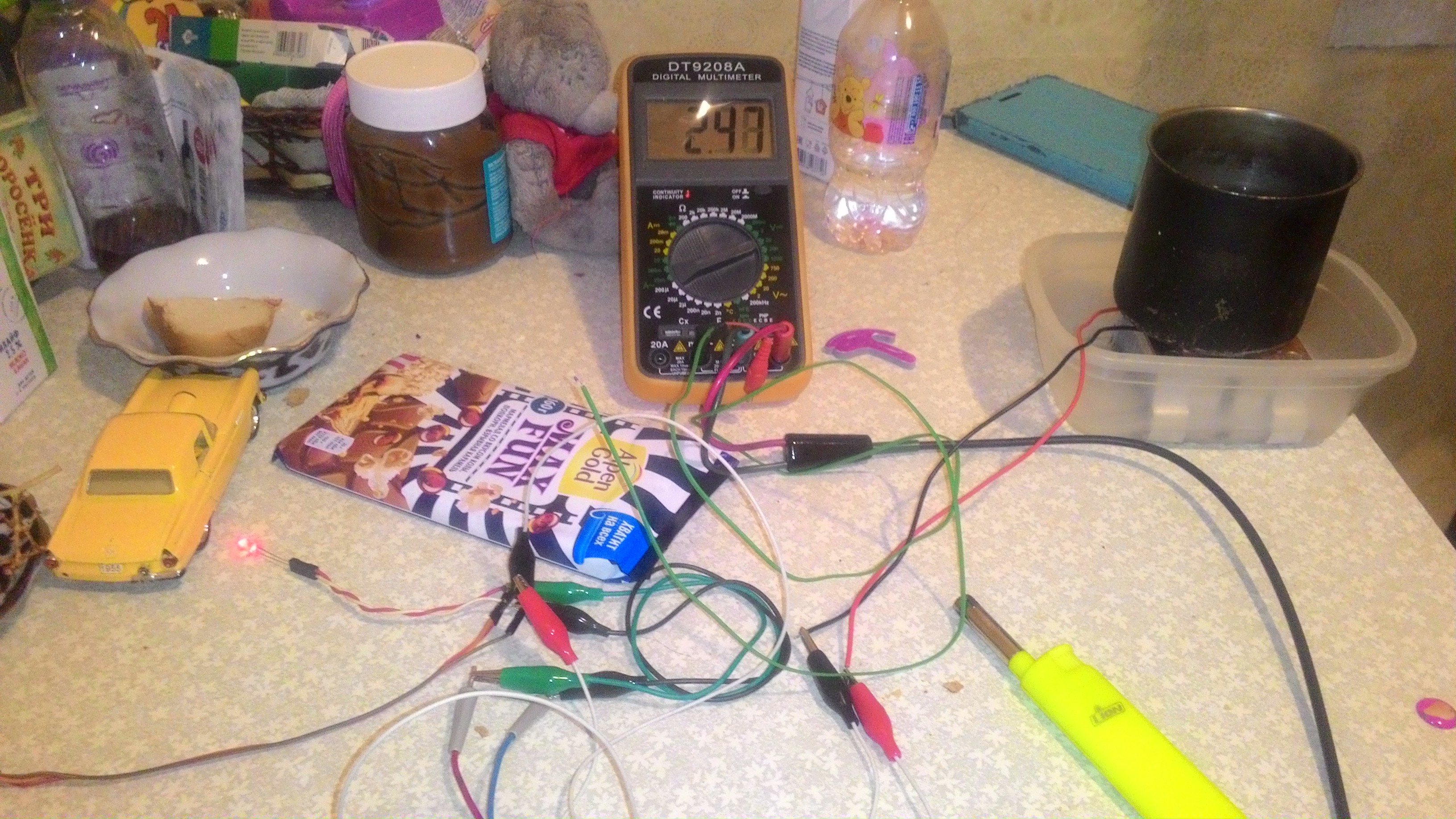 Idling at the output of the Burst-Up converter:
Idling at the output of the Burst-Up converter: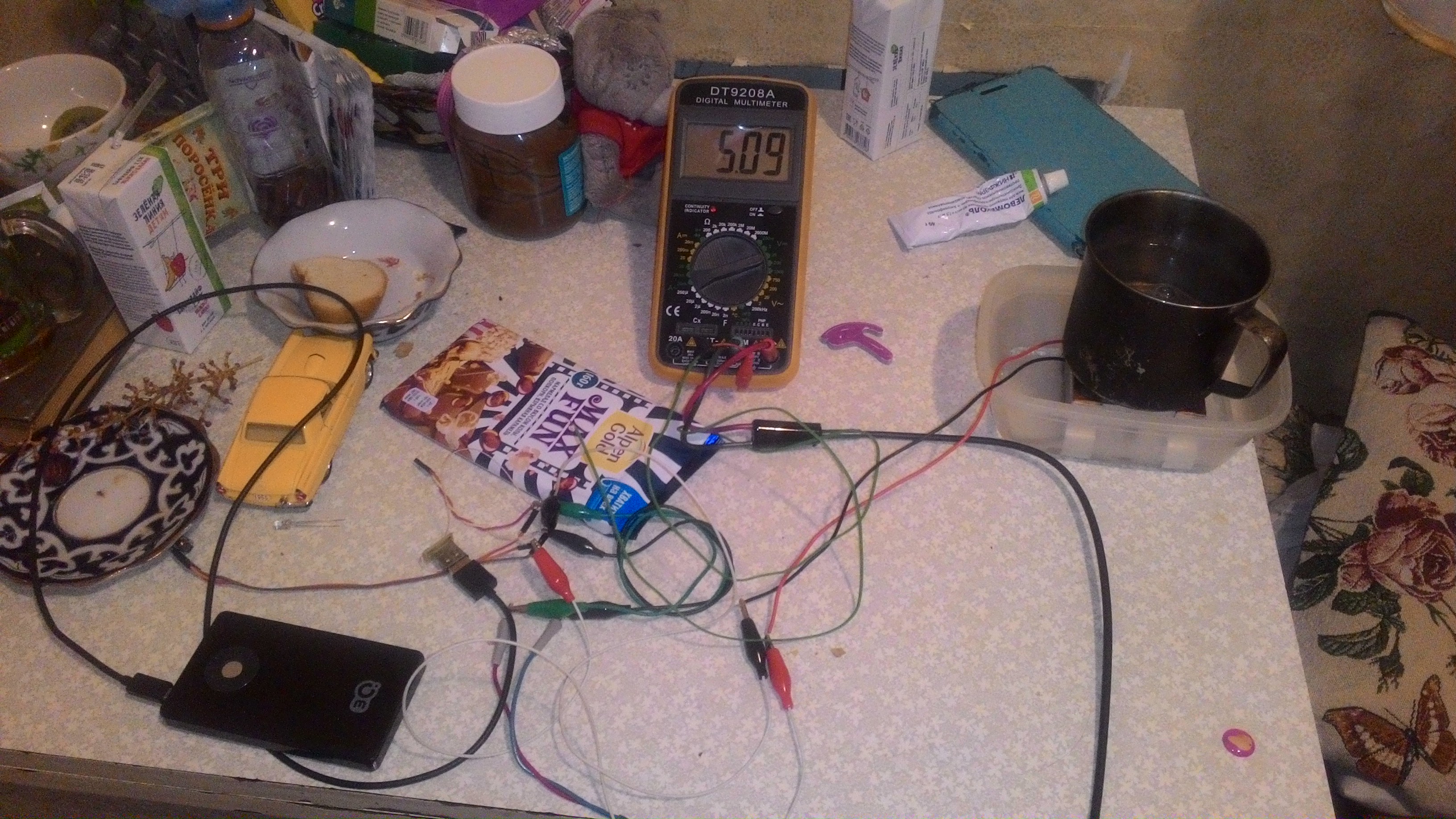 Now we’ll connect a proprietary PowerBank capable of accumulating even small charge currents. And he is charging!
Now we’ll connect a proprietary PowerBank capable of accumulating even small charge currents. And he is charging! The charge current can be estimated as follows: Burst-Up efficiency = 0.9, therefore, about 20 mW of power is supplied to the PowerBank. There is a Step-Down converter in the bank, for charging a Li-Ion battery with an initial voltage of 2.8 V and a final 4.2 V, the efficiency of the converter is also taken for 0.9. Then, the remaining power will be 18 mW. The charging current of the battery will be in the range of 4.3 ... 6.5 mA, i.e. about 5 mA.Such a low-power thermal station turned out. Do not forget that these numbers were obtained at a temperature difference of 90 degrees, which decreases as the liquid cools in the cup, and cold liquid, as you know, is collected at the bottom of the cup.How to compensate for this effect, the reader probably already guessed.In conclusion, we compare the energy output of such a generator and a miniature photovoltaic cell with dimensions of 52x9 mm, thickness, 0.2 mm, weight 0.24 grams, U = 0.5 V.
The charge current can be estimated as follows: Burst-Up efficiency = 0.9, therefore, about 20 mW of power is supplied to the PowerBank. There is a Step-Down converter in the bank, for charging a Li-Ion battery with an initial voltage of 2.8 V and a final 4.2 V, the efficiency of the converter is also taken for 0.9. Then, the remaining power will be 18 mW. The charging current of the battery will be in the range of 4.3 ... 6.5 mA, i.e. about 5 mA.Such a low-power thermal station turned out. Do not forget that these numbers were obtained at a temperature difference of 90 degrees, which decreases as the liquid cools in the cup, and cold liquid, as you know, is collected at the bottom of the cup.How to compensate for this effect, the reader probably already guessed.In conclusion, we compare the energy output of such a generator and a miniature photovoltaic cell with dimensions of 52x9 mm, thickness, 0.2 mm, weight 0.24 grams, U = 0.5 V. On the equivalent of solar radiation with an optimal load resistance of 1.5 Ohms, the cell emits 48 mW of power.
On the equivalent of solar radiation with an optimal load resistance of 1.5 Ohms, the cell emits 48 mW of power. That is almost 2 times more than the power received from the Seebeck element in our experiment, however, in cloudy weather, we can safely consider the allocated power as a photocell less by an order of magnitude, i.e. only 5 mW. Then only 4 solar cells 52x9 mm are already equivalent to 1 Seebeck in cloudy weather.
That is almost 2 times more than the power received from the Seebeck element in our experiment, however, in cloudy weather, we can safely consider the allocated power as a photocell less by an order of magnitude, i.e. only 5 mW. Then only 4 solar cells 52x9 mm are already equivalent to 1 Seebeck in cloudy weather. Source: https://habr.com/ru/post/undefined/
All Articles